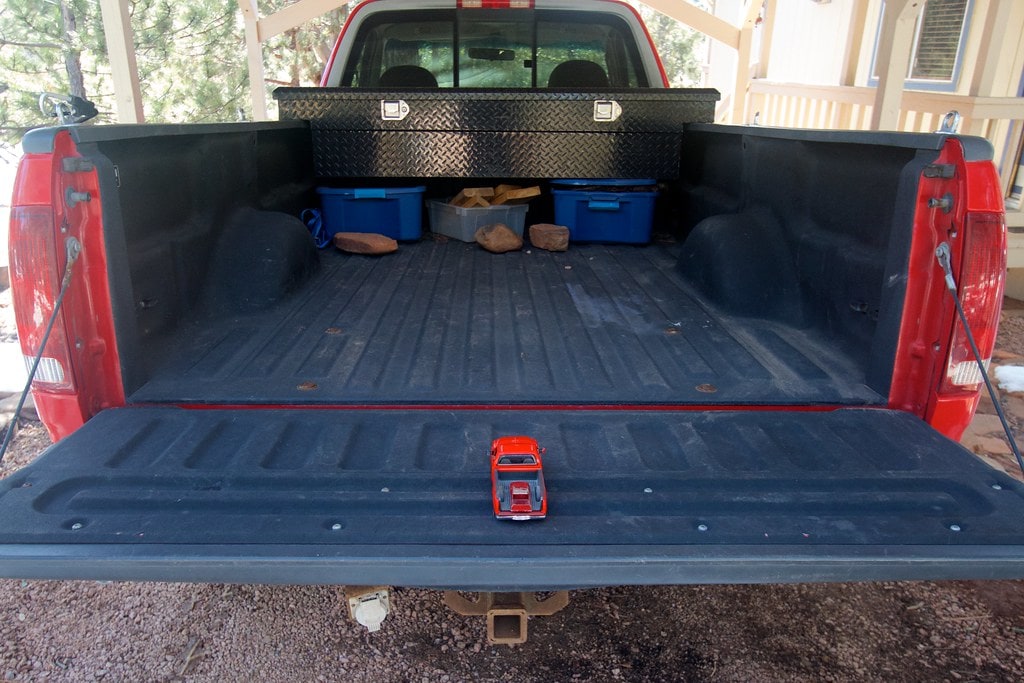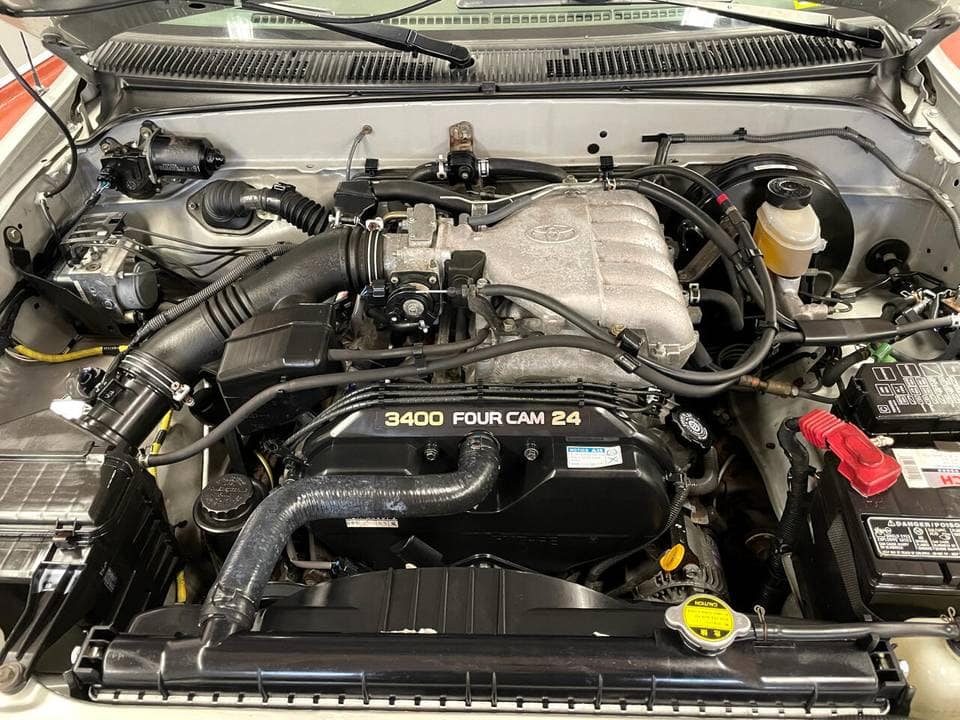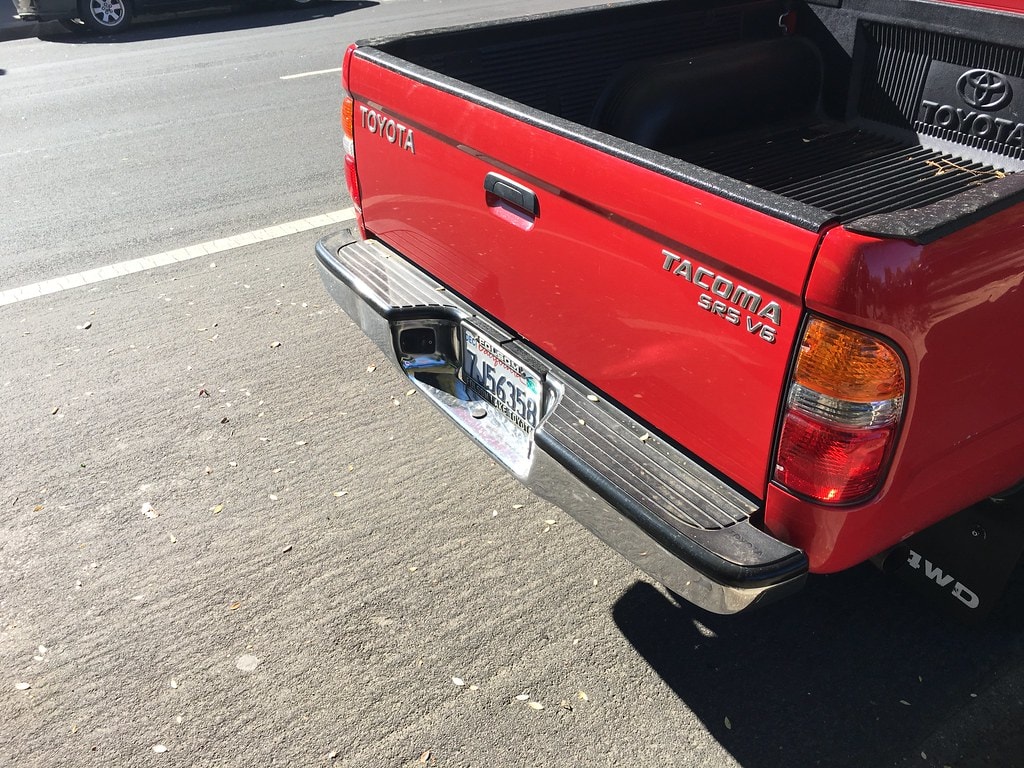What is Tacoma?

What’s new for 2004?
Safety
Toyota did not change much from last year’s model. In terms of Safety, all Tacoma models come fitted with anti-lock brake (ABS) with additional electronic brake force distribution for better-stopping power. The four-wheel-drive versions with a V-6 engine come equipped with Stability Control and Active TRAC traction control system for off-roading. As for the rear-wheel-drive PreRunner models, they come traction control system mated to a limited-slip rear differential. Out of five possible stars, the 2004 Toyota Tacoma received a mediocre three stars for driver safety in head-on crash tests and a decent four stars for passenger safety. It received an additional three stars in side-collision crash tests for front passengers’ safety. Overall, the NHTSA and IIHS rated Tacoma as “Acceptable” for its safety features.Body styles and configurations

Exterior features
The PreRunner trim is decorated with “PreRunner” decals to look like the 4X4 version of the Tacoma, while the S-Runner is lower with a sporty look. The PreRunner and the 4X4 version get a tow hook and skid plate for the gas tank and front suspension/ engine. All the models are fitted with aerodynamic multi-reflector halogen headlamps, a full-size spare tire, double-walled bed, black outside mirrors, and tinted windshield glass.
Inside the cab
Interior-wise, the Tacoma features an industrial, rugged, and functional design. It is a little bit on the frustrating side due to its tall ride height. At least for short people like me. Once you are in you will be greeted with a simple and easy-to-understand interior. Plus, it comes in two color variations; Oak or Charcoal. It is worth noting that the style seems outdated to some extent and could use some upgrades. However, Tacoma still got a couple of niceties to compensate for that. For instance, the dashboard is reasonably laid out with all the controls in the driver’s reach. The seats are generally comfortable but drivers with a large body construction may find it a bit cramped. The base Regular Cab models including the PreRunner get a Tilt-forward front bench seat with fabric trim and adjustable headrests and sculpted door trim with fabric inserts, while the S-Runner and the Xtracab models receive a 60/40 split-bench seat with adjustable headrests. The Double Cab on the other hand features front bucket seats with a dual storage center console. The seats are trimmed with fabric and the storage compartments are under each other. Meaning, if you open the top cover you will find a small storage space that serves as a cover for deeper storage space underneath it.
Under the hood of the 2004 Toyota Tacoma – Engine and transmission
If you pop the hood of a Tacoma, you will find one of the engines:- 2.4-liter inline four-cylinder (Dual Over Head Cam) engine that makes 142 horsepower and 160 lb-ft of torque. It comes as standard on the S-Runner and rear-wheel-drive Regular Cab.
- 2.4-liter inline four-cylinder (DOHC) power plant that produces 150 horsepower and 177 lb-ft of torque. It comes as standard on the PreRunner models, four-wheel-drive Regular Cab, and Xtracab.
- 3.4-liter (DOHC) V-6 that makes 190 horsepower and 220 lb-ft of torque. This big boy is available on the rear-wheel-drive Xtracab and the four-wheel-drive Double Cab. It is available as an option for the PreRunner models.

Driving quality and performance
Body construction
Thanks to its compact dimensions, Driving a 2004 Toyota Tacoma on the highway is a breeze, but unfortunately, it can be difficult in the narrow city streets because of its sheer size and wide turning circle. The Tacoma features a welded steel cab and a double-walled bed that sits on a ladder-frame chassis. In the front, you get an independent double-wishbone suspension with coil springs, stabilizer bar, and gas shock absorbers. The back end features a leaf spring suspension with staggered gas shock absorbers. On top of that, the Tacoma features rack-and-pinion power-assisted steering.Performance and ride quality
Tacoma handles well on and off the road. It is very fun to drive around the corners especially the sporty S-Runner with the five-speed manual. It leans a bit in the turns but it is manageable. The ride is smooth and creamy but can be bouncy over bumpy roads. The Tacoma offers excellent off-road specifically the 4X4 models. It has an axel ratio ranging from 3.91:1- 4.10:1, and a limited-slip differential is a worthy option.Fuel economy
The four-cylinder engines are efficient and have decent power delivery when accelerating. Both four-bangers average 22 miles per gallon in city limits and 25 miles per gallon on the highway with rear-wheel-drive models. The numbers fall back with the four-wheel-drive system but it still manages to average a decent 18 miles per gallon in the city and 21 miles per gallon on the highway. The V-6 is smooth and responsive, especially with the TRD supercharger. The 3.4-liter beast gets an average of 18 miles per gallon in the city and 22 on the highway with rear-wheel-drive models, 17 miles per gallon in the city, and 19 miles per gallon on the highway with four-wheel-drive. The four-wheel-drive models are equipped with Toyota’s 4WDemand system. This nice feature allows you to shift into 4WD-High at speeds up to 50 miles per hour using the transfer case shift knob or a 4-Hi switch on the dash (optional).
Towing and payload
Talking in terms of towing and payload capacities, the Tacoma delivers different results depending on the configuration and the setup you are running. Towing figures range from 3,500 lbs. all the way up to a 5,000 lbs. max. On the other hand, the Payload varies according to the cab style and bed size. The least amount of weight a Tacoma can haul is 1,530 lbs. and 2,000 lbs. maximum weight with the right setup.Warranties
A Toyota without a warranty is like a thanksgiving without a turkey. The Tacoma comes from the factory with three warranties: a basic warranty for 3 years/ 36,000 miles, a drivetrain warranty for 5 years/ 60,000 miles, and a rust warranty for 5 years/ unlimited miles.Packages
The 2004 Tacoma gets a premium treatment from Toyota in form of packages. It includes: The classic SR5 Chrome Package features:- Chrome bumpers
- Grille surrounds
- Air conditioning
- Dual-fabric sun visors with mirror and visor extensions
- Orange-illuminated white-faced gauges
- Digital clock
- Tilt steering wheel
- Deluxe AM/FM cassette/cd with four/ six speakers
- Bilstein off-road-tuned suspension with high-pressure gas shocks
- 16” inch 5-spoke aluminum-alloy wheels
- P265/70R16 BFGoodrich tires with white lettering
- Locking rear differential,
- Fender flares
- TRD graphics and stickers
Tacoma’s closest competitors
Tacoma is a serious pickup truck and it receives serious competition as well. Some of the competitors worth considering are the GMC Canyon, Chevrolet Colorado, Mazda B2300, and the Ford Ranger.Pros
- Flexible and refined drivetrains
- Great off-road capabilities
- A wide variety of body configurations
- Stability control
- Build quality and reliability.
Cons
- The standard features list is very limited.
- No third or fourth door on Xtracab
2004 Toyota Tacoma Guide: FAQs
Should I lift my Toyota Tacoma? Lifting your Tacoma depends on how you intend to drive it. It is not a bad idea to lift your pickup truck, and many would recommend it. The market is over-flooded with lift kits from great brands like Bilstein, FOX, and ICON that will give you up to 3 inches of lift to fit larger tires, improve towing and hauling capabilities, provide better handling, and ride quality. Does the 2004 Toyota Tacoma feature a cabin air filter? Unfortunately, the first-gen Tacoma does not have a cabin air filter, and Toyota only started including cabin air filters in their Tacoma lineup in 2007. Do Tacoma trucks hold their value? According to online surveys, Toyota Tacoma is expected to hold 78% of its original value after five years. How long can a Tacoma last? iSeeCars claims that a Tacoma can reach 300,000 miles with ease and can run for up to 15 years before requiring major repairs .Final thoughts
Without a shadow of a doubt, Tacoma lives up to its name. It comes with many amenities and convenience features to make working and day-to-day driving easier and more comfortable in addition to great off-road capabilities. It presents a peace of mind no other manufacturer can provide. So if you are considering buying a Tacoma, do it! With a Toyota, you can’t go wrong.Latest posts by Tommy Verrcity (see all)
- Best Places to Buy Toyota Tacoma Tires Online - July 7, 2023
- Best Years for Jeep Wranglers: Off-Road Icons! - May 18, 2023
- Best Years for Ford F150 - May 1, 2023

